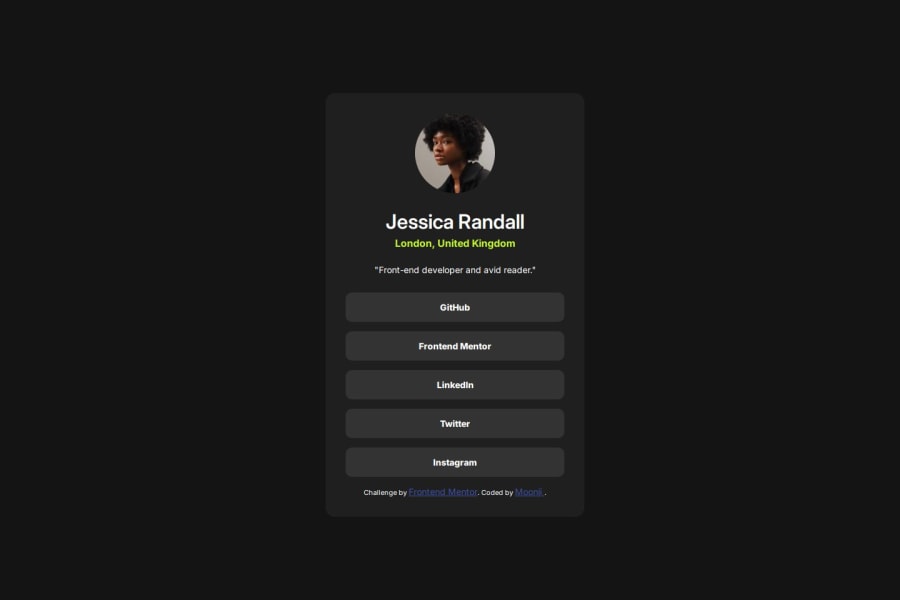
Design comparison
SolutionDesign
Solution retrospective
What are you most proud of, and what would you do differently next time?
I had done all the free beginner challenges before starting a Learning Path, so I'm proud of going back to the project and refining it a bit.
What challenges did you encounter, and how did you overcome them?I encountered the challenge of deciding which method to use for creating the links to the user's socials. I don't know which way is most practical or effective but it was interesting to experiment with that section.
What specific areas of your project would you like help with?I don't have any particular areas I'd like help with, but if anyone has critiques and advice I'm completely open to and appreciative of it!
Community feedback
Please log in to post a comment
Log in with GitHubJoin our Discord community
Join thousands of Frontend Mentor community members taking the challenges, sharing resources, helping each other, and chatting about all things front-end!
Join our Discord
